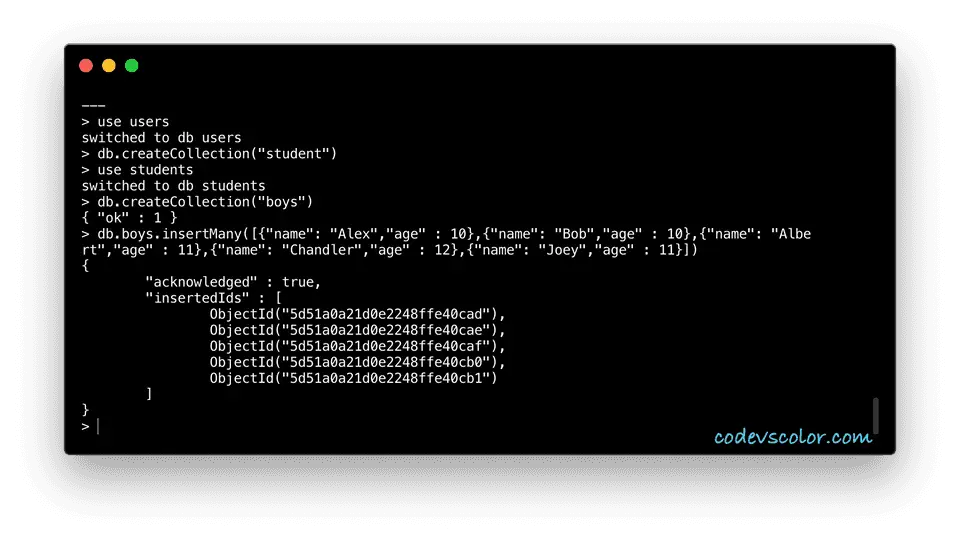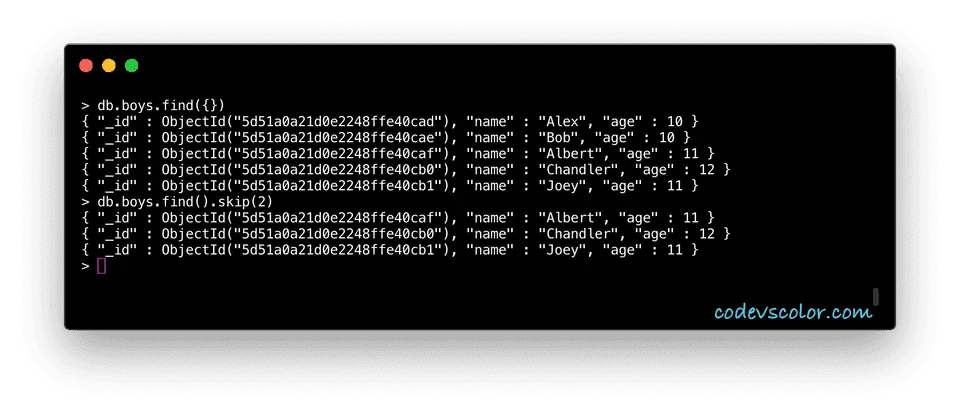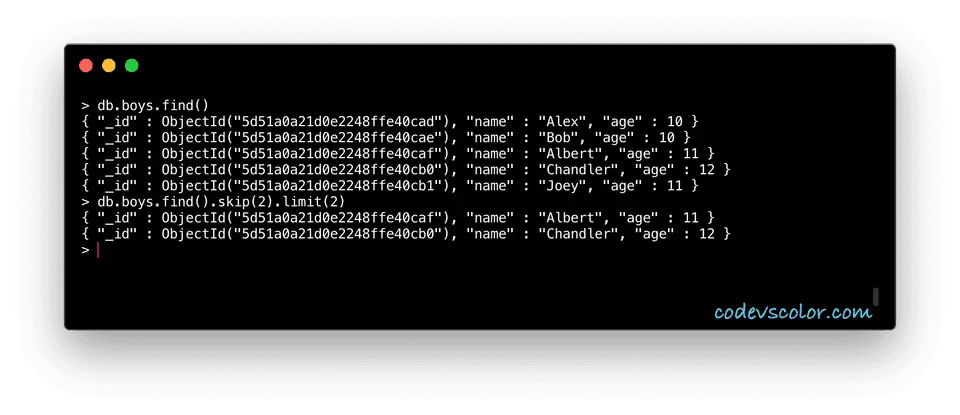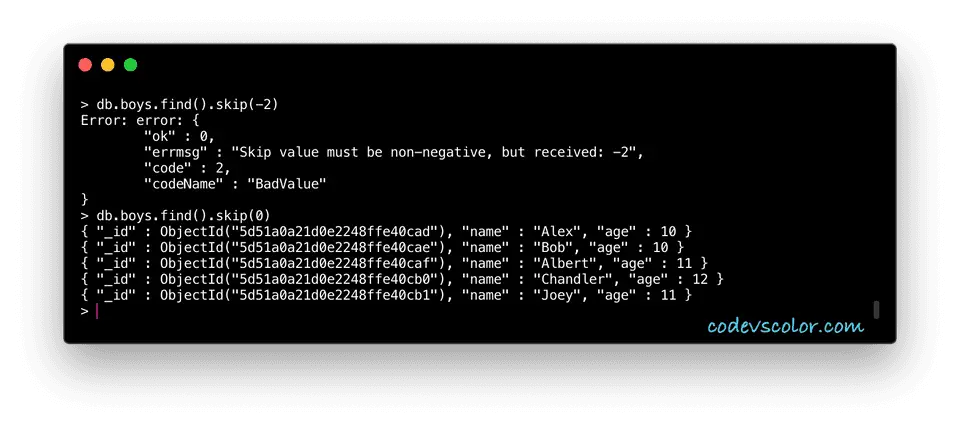In MongoDB, we can limit the number of documents that we want by using limit() method. This method takes one number and returns only that number of documents. Similar to limit(), we also have another method called skip() to skip the starting values. This method is defined as below :
cursor.skip()
The only parameter offset is a number parameter and it is the number of documents we need to skip. We should use this method before retrieving any document.
In this tutorial, I will show you how to use skip with an example.
Example of using skip() :
Before moving to the skip() example, let’s create one new database, collection and insert a few documents into it :
1. Create one new database :
Open one terminal and use mongod command to run the MongoDB daemon process. Now, open one new terminal window, enter to the MongoDB console using mongo and use the below command to create one database students :
use studentsCreate one new collection boys in this db :
db.createCollection("boys")
Insert a few documents to this collection :
db.boys.insertMany([{"name": "Alex","age" : 10},{"name": "Bob","age" : 10},{"name": "Albe
rt","age" : 11},{"name": "Chandler","age" : 12},{"name": "Joey","age" : 11}])
Now, let’s try to use the skip() method :
Skip the first two :
db.boys.find().skip(2)
Skip first two but show only two results :
db.boys.find().skip(2).limit(2)
Negative value and zero :
For a negative value, it throws one error and for zero, it will return all results.




